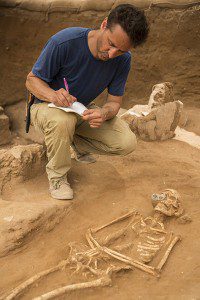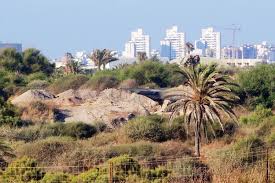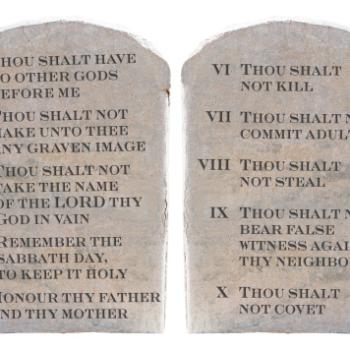 I posted yesterday about the announcement Sunday of the discovery of more than 200 Philistine skeletons in a 3,000-year old cemetery at Ashkelon, Israel. Ashkelon was one of the five city-states of ancient Philistia, the arch rival of ancient Israel that we read so much about in the Jewish Bible (Old Testament). This is a major archaeological find that will have much impact on studies about the ancient Philistines, of whom there has been quite a lack of information.
I posted yesterday about the announcement Sunday of the discovery of more than 200 Philistine skeletons in a 3,000-year old cemetery at Ashkelon, Israel. Ashkelon was one of the five city-states of ancient Philistia, the arch rival of ancient Israel that we read so much about in the Jewish Bible (Old Testament). This is a major archaeological find that will have much impact on studies about the ancient Philistines, of whom there has been quite a lack of information.
 The most important goal of this discovery is that the Leon Levy Exhibition team that worked on this archaeological dig for thirty years (it just officially ended) is to use DNA found on these skeletons to determine the origin of the ancient Philistines. For several years now, archaeologists have been very certain that the Philistines were not a Semitic people, as were Israelites and most surrounding peoples, and archaeologists have been pretty certain the Philistines immigrated to the Levant from the region of the Aegean Sea between Greece and Turkey.
The most important goal of this discovery is that the Leon Levy Exhibition team that worked on this archaeological dig for thirty years (it just officially ended) is to use DNA found on these skeletons to determine the origin of the ancient Philistines. For several years now, archaeologists have been very certain that the Philistines were not a Semitic people, as were Israelites and most surrounding peoples, and archaeologists have been pretty certain the Philistines immigrated to the Levant from the region of the Aegean Sea between Greece and Turkey.
National Geographic magazine is calling this “an unrivaled discovery” that almost didn’t happen. It is providing some fascinating details by saying, “While the Leon Levy Expedition has been excavating Ashkelon since 1985, it wasn’t until a few years ago that a retired employee of the Israel Antiquities Authority told the expedition team that he recalled uncovering Philistine burials outside of the city’s north wall during a construction survey in the early 1980s.”
“In the 2013 excavation season, archaeologists decided to dig some test pits in the area around the wall and kept coming up with nothing. By the end of the final day of digging, with 30 minutes left until the backhoe operator announced he would drive off, Adam Aja, assistant curator at Harvard’s Semitic Museum and the excavation’s assistant director, found himself staring into an empty pit roughly 10 feet (three meters) deep. Frustrated, he insisted that the digging continue until they hit bedrock.
“Instead, they hit what looked like fragments of bone. Aja was lowered into the pit in the bucket of the backhoe to investigate, and picked up a human tooth. ‘When I saw the tooth, I knew that was the moment when it was all going to change for us here,’ he recalls.”
The magazine adds, “until the discovery of the cemetery in Ashkelon there were no human remains from indisputably Philistine sites for researchers to study.”
While it will be very important to the academic, particularly archaeological, discipline to firmly establish through DNA the origin of the Philistines, I think if this DNA is compared to the DNA of modern Palestinians and this comparison results in a reasonably close match, that would be much more exciting for the whole world and especially the Palestinians. Why? It could have a major impact on settling the Israeli-Palestinian conflict.
How so? Just as the Jews claimed their “ancestral land” in their Proclamation of Independence, which is still the sole basis for the existence of the modern State of Israel, so the Palestinians could claim “the land of the Philistines” as their ancestral land in which to establish their State of Palestine, which word derives for Philistine.












